Let's face it; the UK isn't famous for its hot, sunny weather! Despite this - or perhaps because of this - thousands of homeowners have installed outdoor hot tubs.
They're ideal places for relaxing, forgetting your troubles for an hour or two, and enjoying quality time with family or friends. And in 2020, there was a huge increase in hot tub sales; estimates put this figure at more than 1000%! This was a direct result of the lockdowns during the COVID-19 pandemic when people were forced to spend more time at home, and they decided to take it easy and treat themselves.
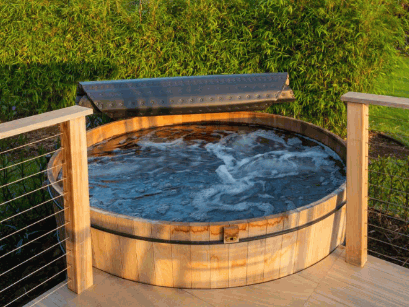
Since then, we've moved into a different era, with the so-called cost of living crisis and massive energy price hikes coinciding with dire warnings about climate change. Understandably, consumers are now concerned about the cost of using their tubs and are looking for ways to reduce costs along with their carbon footprint.
At Skylamp Solar, we are frequently asked if it's possible to run a hot tub using solar power, so we felt it was high time that we addressed this issue in a blog post.
To avoid the suspense, we'll say right here that, yes, it is possible to run a hot tub using solar power all year round, although there are a few factors you need to be aware of.
First, we need to understand how solar power works.
Discover: How Many Solar Panels To Run A Hot Tub
Light from the sun hits our planet every day, and 30 minutes of sunlight holds enough energy to power the entire world for a year!
Solar power soaks up these rays in two different ways:
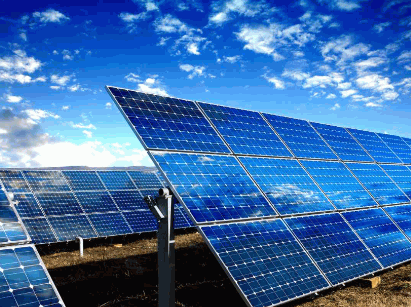
These use the heat from the sun (as infrared rays) to warm up water that can be pumped into your home or hot tub via a heat exchange mechanism.
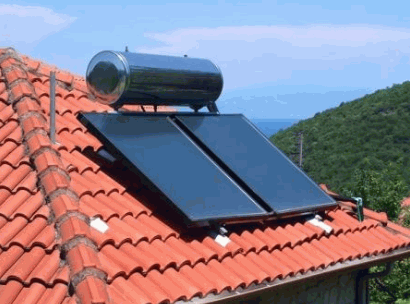
Rather than heat, these cells convert sunlight into electricity. Visible light hits a layer (or two) of semiconductor material in the panel, usually made from silicon. Electrons are knocked from the atoms, creating a charge. This is gathered up to form a DC electrical current. A solar inverter turns the DC current to AC so that the electricity can be used in your home.
There is a third option in the form of hybrid solar panels, which combines the two methods, although these are still some way from being the norm at the moment.
So, solar collectors are more basic in design, and the process is simpler, but can either of these be used to heat your hot tub? If so, which is best?
We'll need to investigate further to find out...
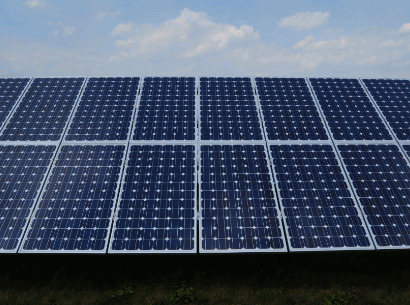
These are the original 'solar panels', as mentioned above. They use the heat from the sun to warm up water for you to use in the home. If you have a system fitted at home already, it's a matter of connecting it up to the tub, bearing in mind that it will be using a fair amount of energy to heat your hot tub.
However, there's some good news: you can now buy a self-contained solar-powered hot tub! These have their own solar system that creates hot water and pumps it into your tub. The water is continually cycled through the pump to the heaters and back into the pool, and you can even control the temperature with a solar controller.
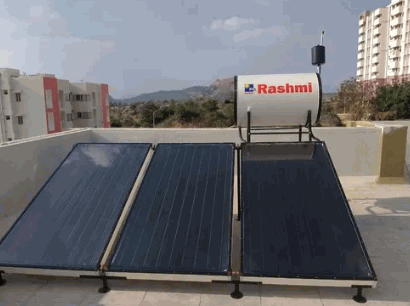
These operate on a different principle, as noted above.
Instead of heating the water directly, the solar panels make electricity that can be used to heat your hot tub. Again, if you already have solar PV fitted, you can connect this to your hot tub, but it will use a sizeable chunk of your daily energy output, especially if you use the hot tub at night when the solar panels aren't working.
Because of this, it is essential to have a battery system to store energy. Although energy storage batteries are an added expense, they work out better in the long term, keeping all that excess energy packed away and ready for you to use later.
Check out: What Is Solar PV
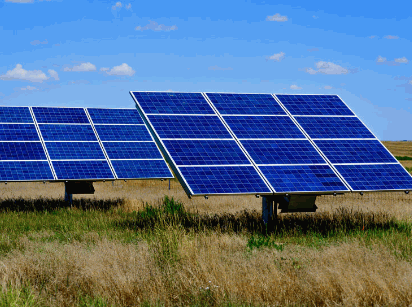
First and foremost, consumers will no doubt be concerned about reducing their energy bills, and that's where solar power wins hands down, as sunlight is free!
Currently, the average hot tub costs between £400 and £1,000 per year to run, which is about £30 to £80 per month. Bear in mind that these are approximate figures, and some models will cost significantly more, especially as energy prices rise.
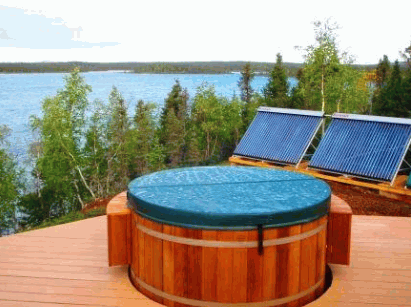
The main sticking point with hot tubs is that you have to keep them switched on all the time, as heating a big block of cold water each time you use them would take an enormous amount of energy. But then, the water cools as it sits in the tub, so hot tubs require a continual supply of energy to keep the water warm, even when not in use. And you need even more heat during the winter months.
Running a hot tub using solar power can significantly reduce your energy costs, especially during the summer months when there is ample solar energy available. However, the amount of savings you can achieve depends on many factors, including:
Based on these factors, you can expect to save between 20% and 70% on your hot tub running costs by using solar power. In the UK, with average electricity prices of around £0.34 per kWh, you could potentially save between £0.7 and £2.38 per hour of hot tub use.
To maximise your savings, consider these tips:
So, it's possible to save money by investing in solar power, even taking initial costs into account. By incorporating these strategies, you can effectively harness solar power to reduce your hot tub running costs, enjoy a more sustainable energy source, and lower your environmental impact.
To discover more about the amazing benefits of solar panels and how this environmentally friendly solution can power your hot tub, contact Skylamp Solar for a free home survey.
Owning a hot tub is often seen as a luxury or a 'guilty pleasure' because it's a bit extravagant and uses a lot of energy. With solar panels, you can enjoy your hot tub guilt-free!